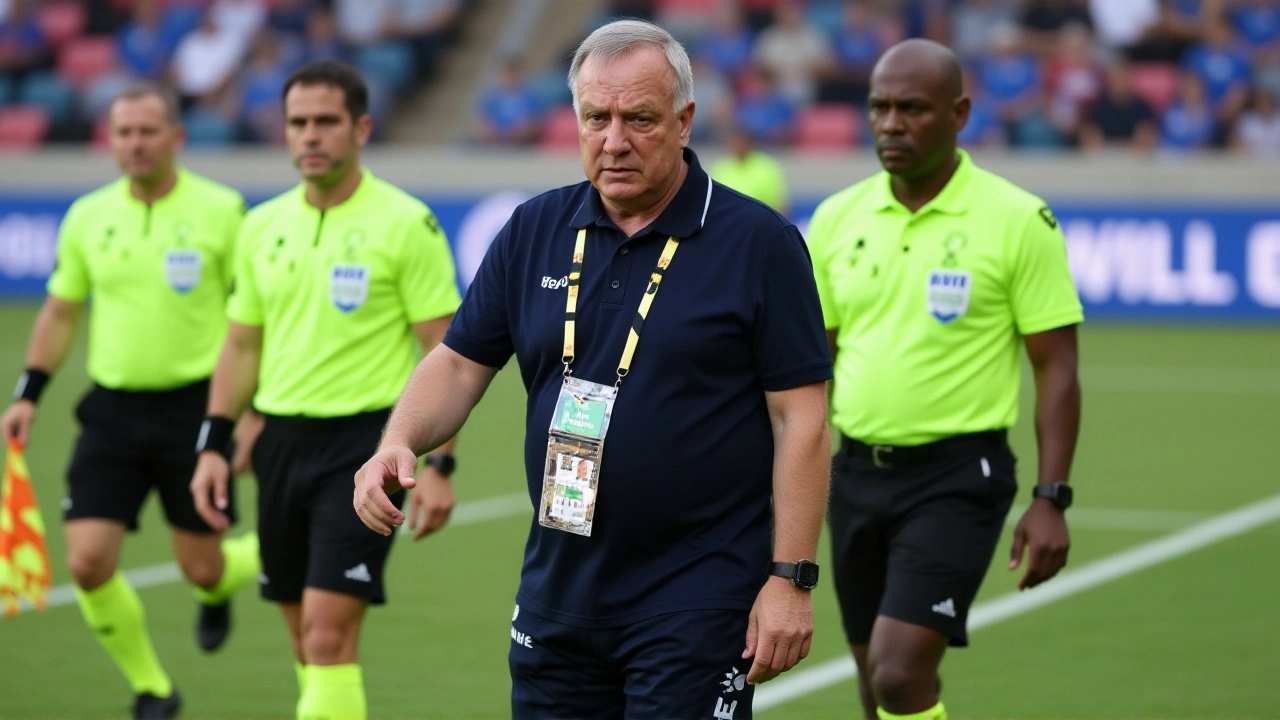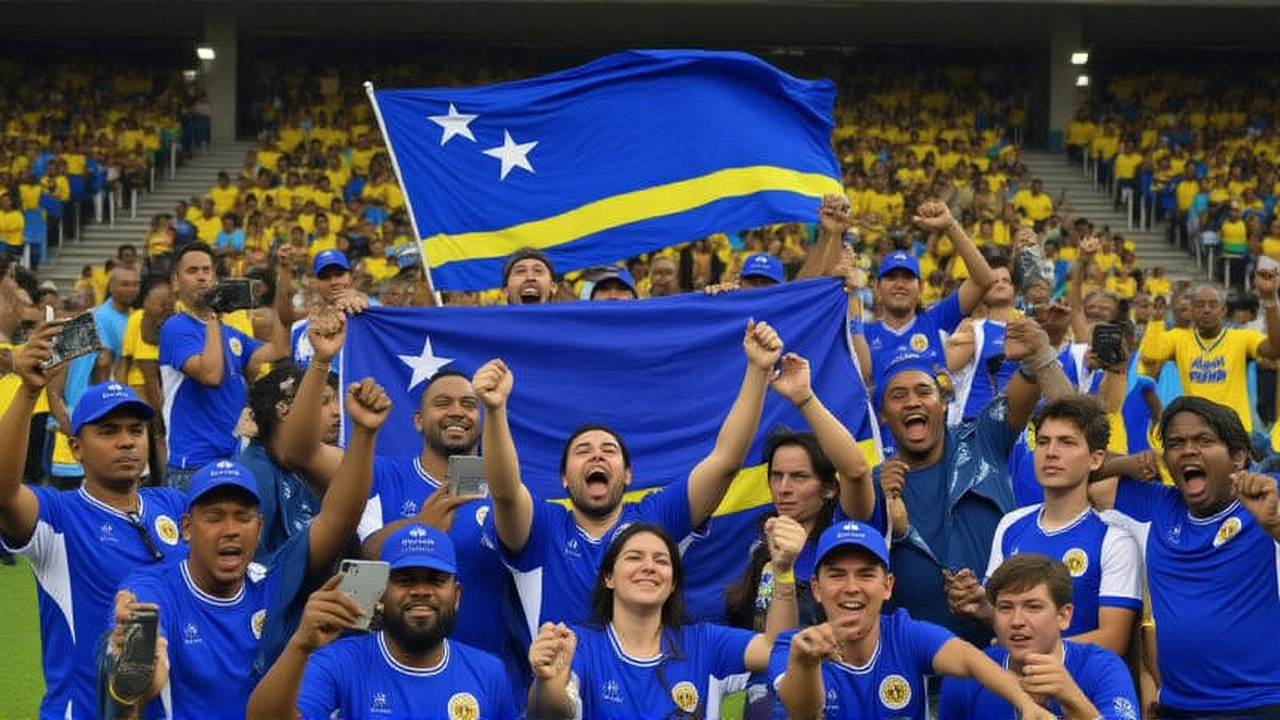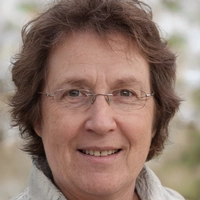On November 19, 2025, a crowd of 165,000 people on a tiny island in the southern Caribbean erupted into cheers—not for a holiday, not for a political victory, but for something they’d dreamed of for generations: Curacao had just become the smallest nation ever to qualify for the FIFA World Cup. The moment came after a gritty 2-1 win over Jamaica, a team ranked 35 spots higher in FIFA’s global standings. No one saw it coming. Not even the players. "I didn’t expect this because I thought Jamaica was a strong team, but we did it," said one member of the Curacao delegation, voice cracking, as fireworks lit up the night sky over Willemstad.
A Nation That Wasn’t Supposed to Be Here
Curacao isn’t just small—it’s tiny by almost any metric. At 444 square kilometers, it’s smaller than Manhattan. Its population is less than half of Iceland’s, the previous record-holder for smallest World Cup qualifier in 2018. For decades, Curacao competed under the Netherlands Antilles banner, a colonial construct that dissolved in 2010. Since then, it’s been an autonomous country within the Kingdom of the Netherlands, with Governor Lucille George-Wout representing the Dutch crown and Prime Minister Gilmar Pisas running day-to-day governance. But on the pitch? They’ve always been underdogs.Before this, Curacao had never passed the second round of World Cup qualifying—not in 2014, not in 2018, not in 2022. Their best result? A single win in 2019 Nations League play. The team’s home stadium, the Stadion Dr. Antoine Maduro, holds just 5,000 fans. The national team’s budget? Less than what some Premier League clubs spend on a single player’s weekly salary. Yet here they are. In the World Cup.
The Moment That Changed Everything
The qualifying match against Jamaica wasn’t just a game—it was a reckoning. FIFA ranked Jamaica 45th globally; Curacao sat at 80th. The Jamaicans had World Cup experience. Curacao had heart, grit, and a generation of players raised on concrete pitches with no turf, no sponsorship, no TV deals. The decisive goal came in the 78th minute—a curling free kick from midfielder Stefano Rijssel, a 24-year-old who plays professionally in the Dutch third division. He didn’t celebrate. He just ran to the corner flag, dropped to his knees, and wept.Footage from Agence France-Presse (AFP), captured live in Willemstad, shows the aftermath: fans dancing on cars, children waving flags made of bed sheets, elders hugging strangers. At 35 seconds into the 1-minute-7-second video, an unnamed official turned to the camera and said, "We will show everyone that we are small, but we are big at heart." That line went viral before the match ended. It wasn’t just a quote. It was a manifesto.

Why the 2026 Expansion Made This Possible
This wouldn’t have happened in 2022. Or 2018. Or 2014. The key? FIFA’s expansion from 32 to 48 teams. That added 16 new slots—slots that opened doors for nations like Curacao, Cape Verde, Jordan, and Uzbekistan, all making their World Cup debuts in 2026. The Caribbean region, historically underrepresented, gained an extra berth. Curacao seized it."It’s not luck," said Dr. Marlon van der Veen, a sports sociologist at the University of Curacao. "It’s decades of grassroots work. Local clubs started youth academies in the 2000s. They didn’t wait for government funding. They used public parks, old tires for cones, parents as coaches. This is community-built football. The system worked. And now, the world sees it."
What Comes Next
The 2026 FIFA World Cup kicks off June 11 in Mexico City and runs through July 19, when the final will be held at MetLife Stadium in East Rutherford, New Jersey. Curacao’s group stage opponents haven’t been drawn yet, but they’ll face teams from North America, Europe, and Asia—all with budgets ten times their size.Still, the team’s coaching staff says they’re not here just to make up the numbers. "We’re not going to sit back," said assistant coach Michael de Jong in a private interview. "We’ve trained for this. We’ve played against bigger teams in friendlies. We know how to defend. We know how to counter. We’re not afraid of anyone."
For Curacao, the World Cup isn’t just about football. It’s about visibility. About dignity. About proving that size doesn’t determine worth. The island has no oil, no major industries, no global brands. But now, it has a team on the world’s biggest stage.

Historical Context: From Netherlands Antilles to World Cup Contender
Before 2010, Curacao didn’t even have its own national team. It was part of the Netherlands Antilles, a colonial entity dissolved after years of political unrest. The football federation was restructured, and the new Curacao Football Federation (CVB) began building from scratch. They had no youth development program. No national academy. No funding. So they did what Caribbean nations do best: they improvised. They borrowed equipment. They held tournaments in parking lots. They recruited players from the Dutch diaspora in Rotterdam and Amsterdam.By 2017, Curacao won the Caribbean Cup. That was their first real trophy. It didn’t get much media attention outside the region. But inside the island, it was the start of something bigger. Now, that something has become history.
Frequently Asked Questions
How did Curacao manage to qualify despite having such a small population?
Curacao’s qualification wasn’t luck—it was decades of community-driven development. Local clubs created youth academies using public parks and donated gear. The CVB recruited players of Curacaoan descent from the Netherlands, building a team with professional experience despite limited funding. FIFA’s expansion to 48 teams in 2026 also opened a crucial extra slot for CONCACAF, giving Curacao the opportunity it needed.
Who are Curacao’s biggest rivals in the Caribbean region?
Jamaica has long been Curacao’s main regional rival, especially since Jamaica’s 2015 Gold Cup win. Trinidad and Tobago, Haiti, and Martinique also pose strong challenges. But Curacao’s 2-1 win over Jamaica in November 2025 was their first-ever qualifying victory against them in a World Cup cycle, marking a turning point in regional football dynamics.
What impact will this have on Curacao’s economy and tourism?
The government estimates a 20-30% spike in tourism during the World Cup, fueled by diaspora visits and international media interest. Local businesses have already reported a 40% increase in merchandise sales since qualification. The island’s international profile has surged—Google searches for Curacao rose 700% in 48 hours. It’s not just football; it’s national pride becoming economic opportunity.
How does Curacao’s team compare to other small nations like Iceland or San Marino?
Iceland (2018) had a population of 334,000 and a professional league system supported by state funding. San Marino (2006 qualifiers) had a population of 32,000 but never qualified. Curacao’s achievement is unique: no professional domestic league, no state-funded academy, and a population nearly half of Iceland’s. Their qualification represents the most improbable underdog story in World Cup history.
Will Curacao’s players get paid for playing in the World Cup?
Most players are semi-professional, juggling jobs in construction, retail, or teaching. FIFA will pay each player a $30,000 appearance bonus, and Curacao’s football federation plans to invest 70% of its World Cup revenue into youth development. This isn’t just about the tournament—it’s about building the next generation.
What’s the next goal for Curacao football after the World Cup?
The CVB has announced plans to build a national training center in Piscadera Bay by 2028, with FIFA support. They’re also negotiating a partnership with Dutch clubs like Ajax and PSV to send coaches and scouts. The goal? To become a consistent qualifier—not just a one-time miracle. This World Cup isn’t the end. It’s the beginning.

